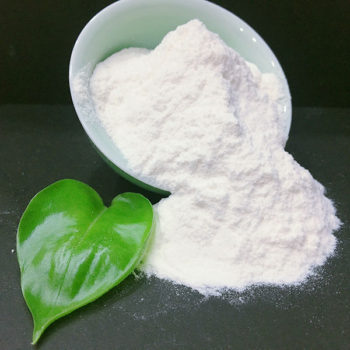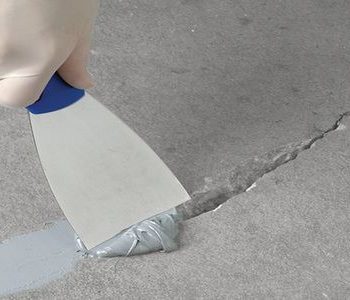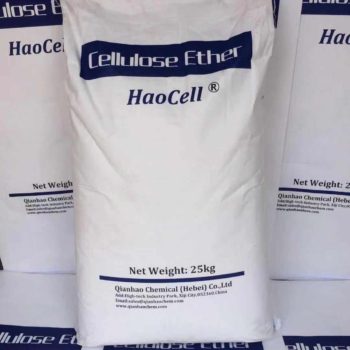Benefits of Using Cellulose Ether in Construction Materials
Cellulose ether is a versatile and widely used material in the construction industry. It is a type of water-soluble polymer derived from cellulose, which is a natural polymer found in plants. Cellulose ether is commonly used as a thickening agent, stabilizer, and binder in various construction materials such as mortar, grout, and tile adhesives. Its unique properties make it an essential ingredient in many construction applications.
One of the key benefits of using cellulose ether in construction materials is its ability to improve the workability and consistency of the mix. When added to mortar or grout, cellulose ether helps to increase the viscosity of the mixture, making it easier to apply and work with. This results in a smoother and more uniform finish, reducing the likelihood of cracks or uneven surfaces. Additionally, cellulose ether can help to extend the working time of the mix, allowing for greater flexibility in application.
Another advantage of using cellulose ether in construction materials is its ability to enhance the strength and durability of the final product. Cellulose ether acts as a binder, helping to hold the particles of the mix together and improve adhesion to substrates. This can result in a stronger and more resilient material that is less prone to cracking or crumbling over time. In addition, cellulose ether can help to reduce shrinkage and improve the overall stability of the construction material, leading to a longer-lasting and more reliable end product.
Cellulose ether also offers environmental benefits when used in construction materials. As a natural and renewable material, cellulose ether is biodegradable and non-toxic, making it a more sustainable choice compared to synthetic alternatives. By using cellulose ether in construction materials, builders can reduce their environmental impact and contribute to a more eco-friendly construction industry. Additionally, cellulose ether is produced using a relatively low-energy process, further reducing its carbon footprint.
In addition to its physical and environmental benefits, cellulose ether also offers economic advantages for construction projects. By improving the workability and strength of construction materials, cellulose ether can help to reduce waste and improve efficiency on the job site. This can lead to cost savings for builders and contractors, as well as a faster and more streamlined construction process. Furthermore, the long-term durability of cellulose ether-enhanced materials can result in lower maintenance and repair costs over time, making it a cost-effective choice for construction projects.
Overall, cellulose ether is a valuable and versatile material that offers a wide range of benefits for construction applications. From improving workability and strength to reducing environmental impact and lowering costs, cellulose ether is an essential ingredient in many construction materials. By incorporating cellulose ether into their projects, builders and contractors can achieve better results, both in terms of performance and sustainability.
The Role of Cellulose Ether in Pharmaceutical Formulations
Cellulose ether is a versatile and widely used polymer in various industries, including pharmaceuticals. It is derived from cellulose, a natural polymer found in plants, and is chemically modified to enhance its properties. Cellulose ether is known for its excellent water solubility, thickening ability, film-forming properties, and stability in different pH conditions. These unique characteristics make it an ideal ingredient in pharmaceutical formulations.
In the pharmaceutical industry, cellulose ether plays a crucial role in the development of various dosage forms, including tablets, capsules, creams, and ointments. One of the key functions of cellulose ether in pharmaceutical formulations is as a binder. Binders are used to hold the active ingredients together in a tablet or capsule, ensuring uniform distribution and consistent release of the drug. Cellulose ether’s binding properties help improve the mechanical strength of tablets and prevent them from crumbling or breaking during handling and storage.
Another important function of cellulose ether in pharmaceutical formulations is as a thickening agent. Cellulose ether can increase the viscosity of liquid formulations, such as suspensions, emulsions, and gels, making them easier to handle and administer. By controlling the flow properties of the formulation, cellulose ether ensures that the drug is delivered accurately and consistently to the target site in the body.
Cellulose ether also acts as a film-forming agent in pharmaceutical coatings. Coatings are applied to tablets and capsules to protect the drug from moisture, light, and air, as well as to mask the taste and odor of the drug. Cellulose ether forms a thin, uniform film on the surface of the dosage form, providing a barrier that protects the drug from external factors and controls its release in the body.
Moreover, cellulose ether is used as a stabilizer in pharmaceutical suspensions and emulsions. Suspensions are liquid formulations in which solid particles are dispersed in a liquid medium, while emulsions are liquid formulations in which two immiscible liquids are dispersed in each other. Cellulose ether helps prevent the settling of particles in suspensions and the separation of phases in emulsions, ensuring the uniform distribution of the drug and maintaining the stability of the formulation over time.
In addition to its role as a binder, thickener, film-former, and stabilizer, cellulose ether also has other beneficial properties in pharmaceutical formulations. It is biocompatible, non-toxic, and inert, making it safe for human consumption. Cellulose ether is also resistant to enzymes in the gastrointestinal tract, allowing for controlled release of the drug and improved bioavailability. Furthermore, cellulose ether is compatible with a wide range of active ingredients and excipients, making it a versatile ingredient in pharmaceutical formulations.
In conclusion, cellulose ether is a valuable polymer in pharmaceutical formulations due to its unique properties and versatile applications. From binding and thickening agents to film-forming and stabilizing agents, cellulose ether plays a crucial role in ensuring the efficacy, safety, and stability of pharmaceutical dosage forms. Its biocompatibility, safety, and compatibility with other ingredients make it an indispensable ingredient in the pharmaceutical industry. As research and development in drug delivery systems continue to advance, cellulose ether will undoubtedly remain a key component in the formulation of innovative and effective pharmaceutical products.
Environmental Impact of Cellulose Ether Production and Use
Cellulose ether is a versatile and widely used material in various industries, including pharmaceuticals, food, construction, and cosmetics. It is derived from cellulose, a natural polymer found in plants, and is chemically modified to enhance its properties. Cellulose ether is valued for its ability to thicken, bind, stabilize, and modify the flow properties of products. However, the production and use of cellulose ether can have environmental impacts that need to be considered.
One of the primary environmental concerns associated with cellulose ether production is the use of chemicals and energy. The process of chemically modifying cellulose to create cellulose ether typically involves the use of solvents, acids, and other chemicals that can be harmful to the environment if not properly managed. Additionally, the energy-intensive nature of cellulose ether production can contribute to greenhouse gas emissions and other environmental impacts.
Furthermore, the disposal of cellulose ether-containing products at the end of their life cycle can also pose environmental challenges. While cellulose ether is biodegradable, the rate at which it breaks down can vary depending on the specific type of cellulose ether and the conditions in which it is disposed. Improper disposal of cellulose ether-containing products can lead to pollution of soil, water, and air, as well as harm to wildlife and ecosystems.
To mitigate the environmental impact of cellulose ether production and use, several strategies can be employed. One approach is to optimize production processes to minimize the use of chemicals and energy, as well as to reduce waste and emissions. This can be achieved through the adoption of cleaner production technologies, the use of renewable energy sources, and the implementation of waste reduction and recycling programs.
Another strategy is to promote the use of sustainable and eco-friendly alternatives to cellulose ether. For example, natural thickeners and stabilizers derived from plant-based materials, such as guar gum, xanthan gum, and carrageenan, can be used as substitutes for cellulose ether in certain applications. These alternatives are often biodegradable, renewable, and less resource-intensive than cellulose ether.
In addition, efforts can be made to improve the end-of-life management of cellulose ether-containing products. This includes promoting recycling and composting programs for products that contain cellulose ether, as well as educating consumers about proper disposal practices. By extending the life cycle of cellulose ether-containing products and ensuring their environmentally responsible disposal, the overall environmental impact of cellulose ether can be reduced.
In conclusion, while cellulose ether is a valuable material with many practical applications, its production and use can have environmental consequences that need to be addressed. By implementing sustainable production practices, promoting the use of eco-friendly alternatives, and improving end-of-life management, the environmental impact of cellulose ether can be minimized. It is essential for industry stakeholders, policymakers, and consumers to work together to ensure that cellulose ether is produced and used in a way that is environmentally responsible and sustainable.



